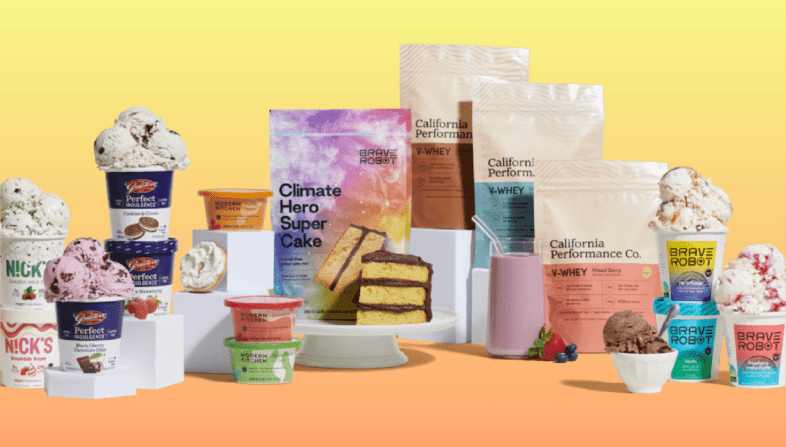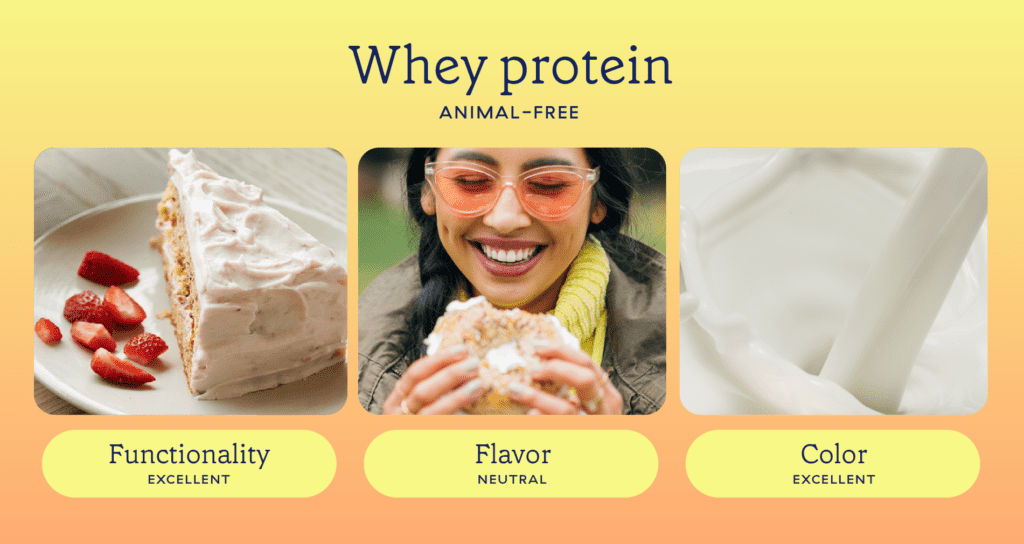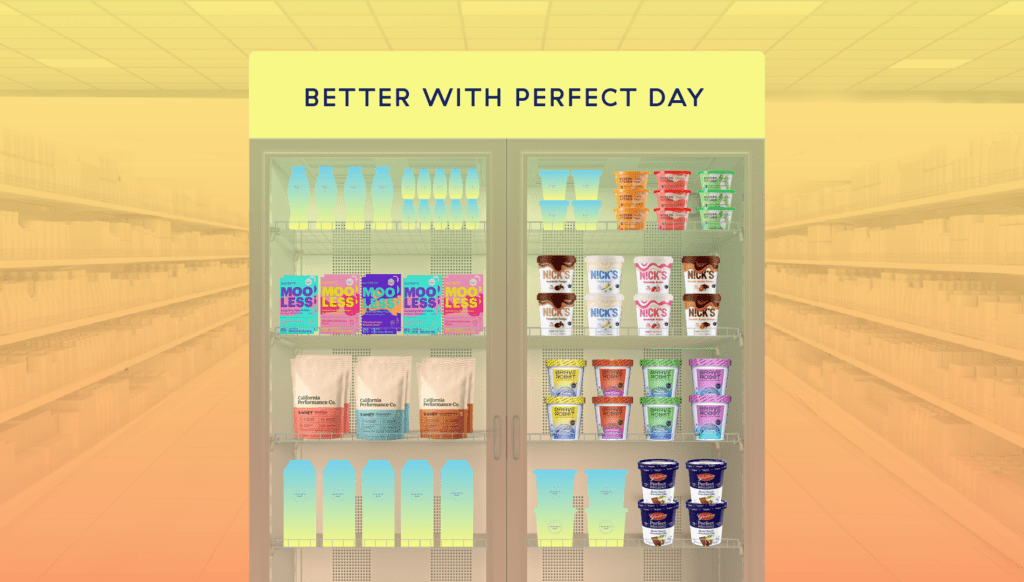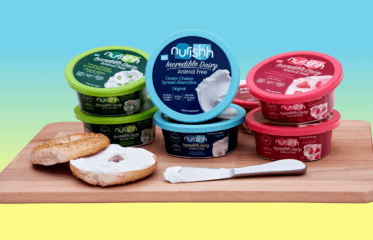The Incredible World of Whey

Where’s the cheese?
This is by far the most common question we get from our fans. Animal-free cheese is truly in high demand! (Relatedly, some exciting news: with the debut of Modern Kitchen and BoldCultr, the world’s first animal-free cream cheese is now available. Get your bagels ready!)
But cheeses and other dairy treats like our partners’ debut ice creams and soon-to-be milks and yogurts are just the tip of the iceberg for what we can do with our animal-free milk protein. Our sights are set on so much more — well beyond the dairy aisle!
An important part of our business is selling our animal-free milk protein as an ingredient to companies looking for ways to make their products kinder and greener. The first protein we’ve commercialized is non-animal whey protein. To bring ready-to-eat, animal-free products to market, we work with food makers and food service operators (think restaurants and cafeterias), providing them with useful ingredients that are the same as the ingredients they already use — but made in a planet-positive way. (Our mission is to change the process, not the food!) This way, food makers don’t have to adapt their processes and products to plant-based ingredients, which may not perform well in product formulations, are not nutritionally equivalent, and sometimes leave unpleasant aftertastes.
Since our animal-free whey protein is the same as the whey protein from cow’s milk, food makers already know how it works alongside other ingredients to make creamy, delicious products. This means they can get products containing our sustainable, vegan-friendly ingredients to market faster, without re-jiggering time-tested recipes. And because this animal-free whey protein has all the same functionality as cow’s whey, you don’t have to sacrifice your favorite foods to do better for the planet. Win-win!
But First: What Is Whey Protein?
Whey protein is one of two classes of proteins naturally found in cow’s milk, along with its counterpart, casein. Together, these two types of protein are what make dairy foods so nutritious.
Protein is a macronutrient — one of the main types of food you need, along with carbohydrate and fat — and it is necessary for keeping you satiated, building and maintaining muscle mass, and ensuring all the cells of your body stay in good working order. While protein can come from many different sources, including plants, milk proteins are among the highest quality, because they contain all nine essential amino acids and are easily digested by our bodies.
All proteins are composed of specific sequences of amino acids. Some amino acids are made within our own bodies; these are called nonessential amino acids. Others, called essential amino acids, must be obtained through diet. The highest quality proteins have a complete set of essential amino acids and have high bioavailability (meaning the protein is readily absorbed during digestion). Whey protein has a uniquely high proportion of what are called branched-chain amino acids (BCAAs), which aid in improving athletic performance, preventing fatigue, and supporting muscle metabolism.

With the exception of soy, plant proteins are generally considered less nutritious, either because they don’t contain a complete set of essential amino acids, they tend to pass through our digestive tracts without being fully digested, or both.1
In sum, whey protein is a natural protein, traditionally derived from cow’s milk, and it is considered one of the most nutritious proteins available. Today we can produce this same wholesome protein completely without the use of cows, through precision fermentation. But nutrition isn’t the only motivation to make whey — we also want to make it because it’s an extremely effective ingredient.
Functionality Across a Spectrum of Uses
Food product developers are experts on how ingredients interact with one another to create appealing textures and flavors. They have long relied on whey protein to fill a broad range of culinary roles — which is why we find it in all kinds of packaged foods.

Many foods require high water content, and whey protein’s high solubility and clarity mean that it dissolves readily and completely in these foods, without changing their color or making clear liquids cloudy.
Related to solubility, other facets of whey protein’s usefulness include gelation and water binding capacity. Whey protein is especially good at “grabbing,” or binding, to water molecules and other whey proteins. With enough whey dissolved in water, the proteins form a three-dimensional structure, or gel, that can actually hold more than its mass in water. In some applications, whey protein can be used as a fat replacer, adhering to itself to make compounds large enough to mimic fat molecules, creating the same smooth, creamy sensation.
Under specific conditions, whey protein is heat stable, meaning that the protein won’t degrade or lose its properties when exposed to heat during product manufacturing or cooking.
Finally, interfacial activity is another component of food product development. In chemistry, the word interface refers to the surface that forms between two substances. Food scientists and product developers are interested in the way different kinds of protein help create boundaries between things like fats, water, and air bubbles. Whey protein is useful in the formation of foams, because it creates a strong structure between air and water molecules that keeps the bubbles evenly dispersed and prevents their collapse. It serves a similar role at the interface of water and fat. Although they’re naturally repellent from one another, the addition of whey protein helps emulsify fat so it stays uniformly suspended in water without separating.
Whey protein is even functional enough to replace eggs in some applications. Here’s a fun fact: the same animal-free whey protein that makes Brave Robot’s ice cream so creamy is also used in their new cake mix to replace the equivalent of three eggs — and makes a moist, tender cake! It’s no wonder food makers love to work with whey protein. Its range of functionality in food science is unmatched. Add to that its complete profile of essential amino acids and our bodies’ ability to easily digest it, and we can see the reason for whey protein’s astonishing market size. Grand View Research reports a global market value of USD $8.7 billion for whey protein, and the market is expected to continue growing steadily each year.2 Given the critical need to develop new sources of nutritious protein without further expanding animal agriculture’s footprint, this represents a promising opportunity for animal-free whey.
Whey, Way Beyond the Dairy Aisle
Next time you’re at your local grocer, pick up some packages and look at their ingredient labels. You might be surprised to notice how many products, even outside the dairy aisle, contain milk derivatives like whey protein — separated from fluid milk, then dried into a pure powder and used in all kinds of packaged goods. (Interestingly, Perfect Day uses the same separation and drying processes to make our animal-free protein powder.)

Here’s a sampling of the types of products in which whey protein is found:
- Baked goods, sandwich breads
- Baking mixes
- Boxed cereals and cereal bars
- Breadcrumbs and croutons
- Broths, stocks, gravies, and bouillon
- Chewing gum
- Chocolate and confections
- Coffee creamer
- Condiments and dips
- Cookies
- Crackers
- Hot cocoa and other instant drink mixes
- Instant mashed potatoes
- Low-fat products
- Margarine
- Meal replacements, dietetic foods, and sports nutrition products
- Potato chips and other snack foods
- Protein and energy bars
- Protein-fortified beverages
- Puddings
- Salad dressings (including vinaigrettes)
- Sauces and sauce mixes
- Soups
- Spice mixes
- Vegetarian “meat” analogs
You might not think of the above list as being “dairy” products, but they all include whey protein! So while continuing to develop milk and cheeses of all kinds is definitely on our to-do list, don’t be surprised to see some diverse and unexpected offerings from Perfect Day in the near future. Ice cream and cream cheese are just the tasty beginnings.
- Bailey, Hannah M. and Stein, Hans H. (2019). Can the digestible indispensable amino acid score methodology decrease protein malnutrition. Animal Frontiers, 9(4), 18-23. https://doi.org/10.1093/af/vfz038
- Grand View Research. (2020, December). Whey protein market size, share & trends analysis report by type (Whey protein isolates, whey protein concentrates, whey protein hydrolysates), by application, by region, and segment forecasts, 2020-2027: Report overview. https://www.grandviewresearch.com/industry-analysis/whey-protein-market
We’d love to hear your thoughts!
Your email address will not be shared.


